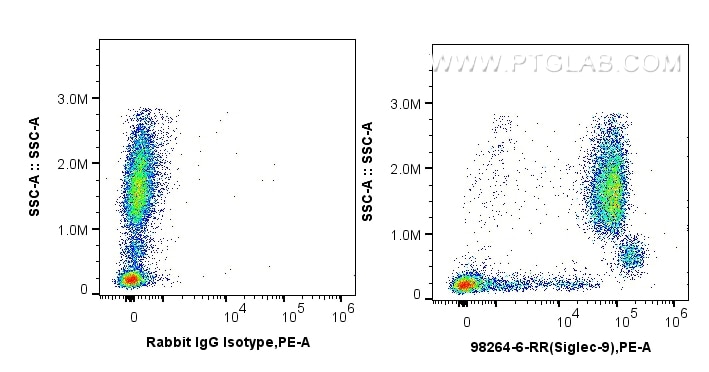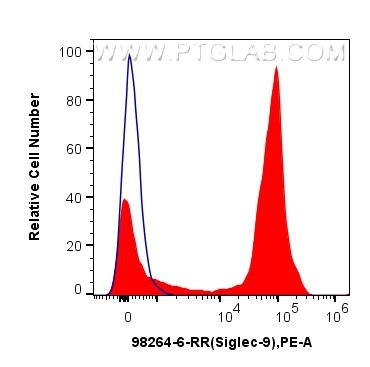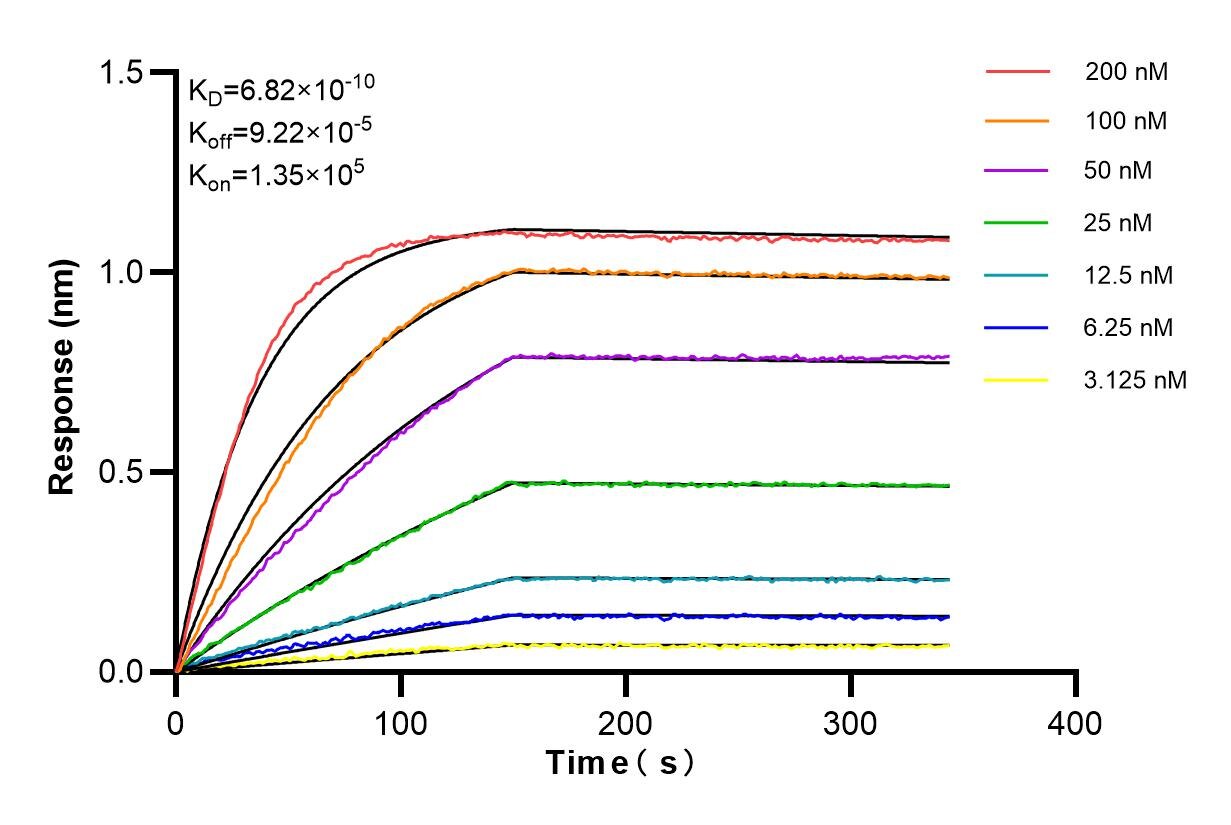Tested Applications
| Positive FC detected in | human peripheral blood leukocytes |
Recommended dilution
| Application | Dilution |
|---|---|
| Flow Cytometry (FC) | FC : 0.25 ug per 10^6 cells in a 100 µl suspension |
| This reagent has been tested for flow cytometric analysis. It is recommended that this reagent should be titrated in each testing system to obtain optimal results. | |
| Sample-dependent, Check data in validation data gallery. | |
Product Information
98264-6-RR targets Siglec-9 in FC applications and shows reactivity with human samples.
| Tested Reactivity | human |
| Host / Isotype | Rabbit / IgG |
| Class | Recombinant |
| Type | Antibody |
| Immunogen | Recombinant protein Predict reactive species |
| Full Name | sialic acid binding Ig-like lectin 9 |
| Calculated Molecular Weight | 50 kDa |
| GenBank Accession Number | NM_014441.3 |
| Gene Symbol | Siglec-9 |
| Gene ID (NCBI) | 27180 |
| Conjugate | Unconjugated |
| Form | Liquid |
| Purification Method | Protein A purification |
| UNIPROT ID | Q9Y336-1 |
| Storage Buffer | PBS with 0.09% sodium azide, pH 7.3. |
| Storage Conditions | Store at 2 - 8°C. Stable for one year after shipment. |
Background Information
Sialic acid binding Ig-like lectin 9 (Siglec-9), also known as CD329, is a member of the Siglec family of glycan-recognition proteins. Siglec-9 is a type-I transmembrane protein consisting of an N-terminal extracellular region that contains an N-terminal V-set domain and two C2-set domains, a transmembrane region, and an intracellular domain with an immunoreceptor tyrosine-based inhibitory motif (ITIM) and an ITIM-like motif (PMID: 10801862). It is expressed quite broadly among human blood leukocytes, including monocytes, neutrophils, B cells, NK cells, and minor subsets of T cells (PMID: 32322597). Siglec-9 functions as an inhibitory immune checkpoint and can be targeted to enhance therapeutic antitumor immunity (PMID: 34155121; 37460871).
Protocols
| Product Specific Protocols | |
|---|---|
| FC protocol for Siglec-9 antibody 98264-6-RR | Download protocol |
| Standard Protocols | |
|---|---|
| Click here to view our Standard Protocols |







